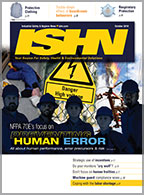Many occupational safety and health professionals perform tasks outside of their main area of expertise, according to a recent survey on their continuing education needs published in the American Journal of Industrial Hygiene.
The survey built on the 2011 National Assessment of the Occupational Safety and Health Workforce, also called the Westat report, which had similar findings. In 2017, investigators at the NIOSH Education and Research Centers identified new workforce training needs and interests since the 2011 Westat report. They developed a 27-question survey that included similar questions to the Westat report, addressing newer safety and health topics emerging within the last decade. These topics included work across disciplines, or work both within a primary profession and outside of it, and Total Worker Health®, which comprises policies and practices that protect workers and promote health and safety. The survey also asked about preferences for training topics in continuing education.
The investigators distributed the online survey to occupational safety and health and allied, or related, professions across the United States and received 2,064 responses. Most of the respondents worked in private industry and were 50 years of age or older. Their primary professions included safety (28%), occupational health nursing (18%), and industrial hygiene (12%). However, nearly two thirds of respondents reported additional responsibilities in other occupational safety and health-related areas, such as workplace design, or ergonomics, and wellness. Survey respondents expressed the greatest interest in continuing education related to injury prevention, occupational stress, exposure assessment, and safety culture. These survey findings show that interdisciplinary work or work across disciplines continues to grow in occupational safety and health and underscore the need for cross-training in the field.




